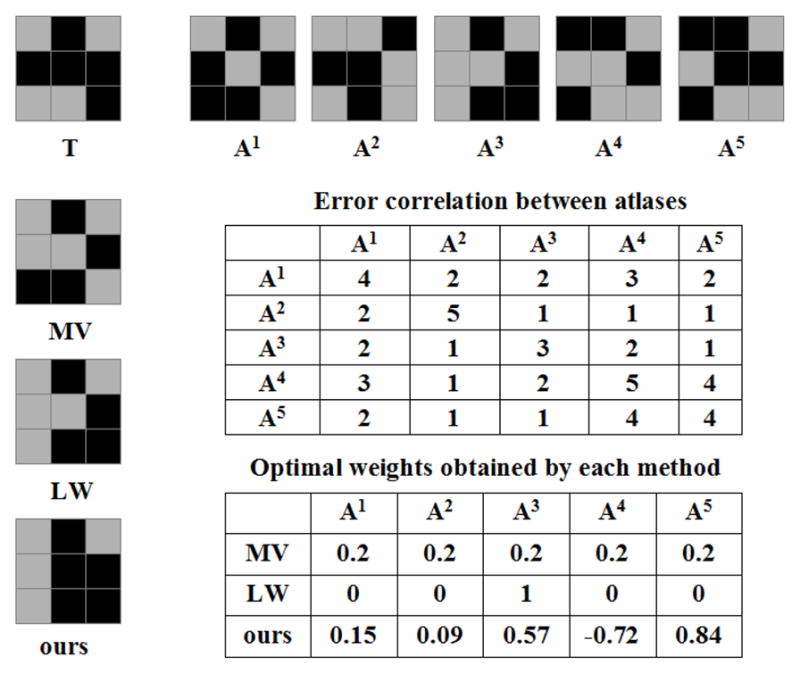Figure 1.

Illustration of label fusion on a toy example. The target segmentation, T, is shown on the top left corner, followed by five registered atlases, A1 to A5. For simplicity, we use binary label posteriors and assume that the images have the same appearance patterns as the segmentations. Error correlations are all positive, indicating a strong positive correlation between the label errors produced by the atlases. As a result, majority voting (MV) produces a result biased towards atlas A1 and A4. Similarity-based Gaussian weighting label fusion (LW) reduces to single-atlas segmentation, i.e. only the most similar atlas, A3, has a non-zero weight. To compensate the overall bias towards A4, when linear regression is applied, only A4 receives a negative weight to cancel out the consistent errors among all atlases. For LW and our method, the atlas weights computed for the center pixel are also used for non-center pixels in this example.
